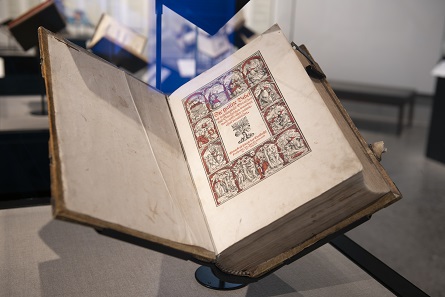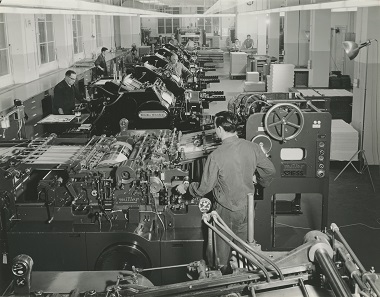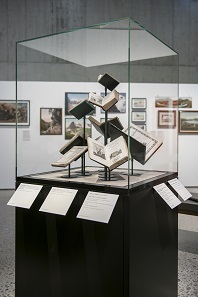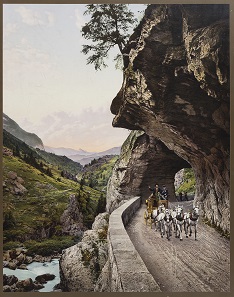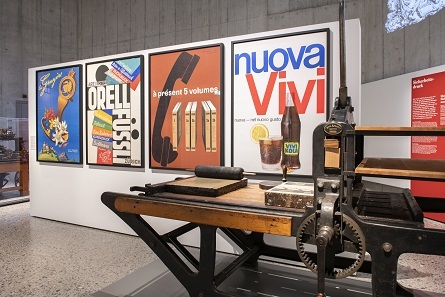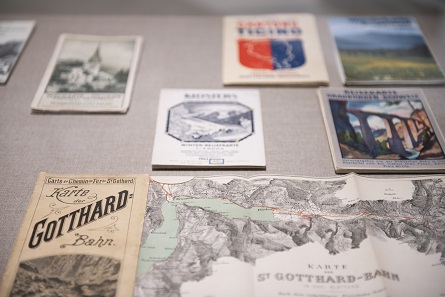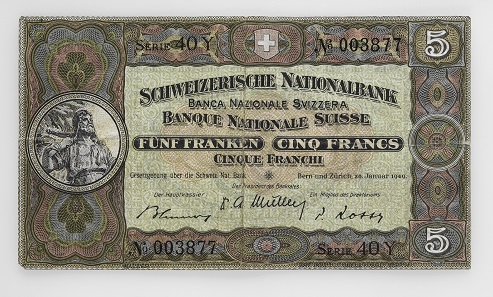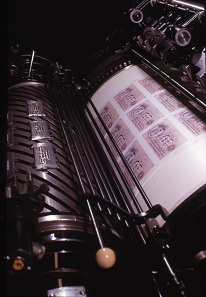February 28, 2019 – People have been printing in Switzerland for more than 500 years. What started out as simple manual work is today a high-tech industry manufacturing scores of products, from books to credit cards. The new exhibition “From the bible to banknotes. In print since 1519” at the National Museum Zurich gives an overview of the history of printing, explores the technical developments and presents bestsellers from the past 500 years. The exhibition is open until April 22, 2019.
A view of the exhibition. Photo: Swiss National Museum.
Printing has a long history in Switzerland. In Zurich, this success story also has a lot to do with Christoph Froschauer. After his apprenticeship as a printer in Augsburg at the beginning of the 16th century, the Bavarian was drawn to the city on the Limmat and took over a small printing business there. Over the years, he expanded the business into a publishing house. The company still exists today, and since 1798 has been called Orell Füssli.
View of the machine room for letterpress printing, with Miller and Heidelberg presses. Photo: Archiv Orell Füssli.
The history of printing is closely linked to technical development. Until 1843, even in Zurich the work was done using manual presses. After that, first high-speed presses and later the offset process replaced the manual work. The technologies became better and better, making it possible to produce huge print runs in a short time. This benefited the production of newspapers and magazines, which enjoyed a growing readership from the 18th century onwards.
A view of the exhibition. Photo: Swiss National Museum.
Books have also been printed in Zurich since the very beginning. The literature of the past five centuries gives us a glimpse of the subjects in which readers were interested. While it was mainly religious and scientific works that were big business in the 16th and 17th centuries, later on demand grew for travel literature and children’s books.
Stagecoach on the old Grimselstrasse. Photo-chromolithography makes it possible to reproduce black-and-white photographs in colour, using lithography. Photo: Swiss National Museum.
With the advent of tourism, the production of souvenirs began. The technique of photo-chromolithography, which arrived in the 19th century, met this demand and became an economic factor. These images, which combined photographic precision with colour, enjoyed great popularity and were produced in their thousands. The proliferation of tourism-related subjects not only was lucrative for the printing companies, but also boosted travel to Switzerland. A win-win situation.
A view of the exhibition. Photo: Swiss National Museum.
Other areas of interest are passports, maps, advertising posters and the production of credit cards, share documents and banknotes. The production of paper money in particular is highly complex. Because counterfeit notes are becoming increasingly sophisticated, the security features on new notes need to be enhanced and adapted on a continuous basis. The security printing industry is therefore permanently in innovation mode.
Additional pictures from the exhibition and the history of Orell Füssli:
A Series 2 5-franc note, which was in circulation from 1914 to 1980. Photo: Swiss National Museum.
The Series 5 10-franc note in the copper printing press. Photo: Franz Opitz / Archiv Orell Füssli.
Production of Series 9 10-franc notes. One sheet contains 54 banknotes. Photo: Dominic Büttner / Orell Füssli Verlag.
Production of the Eurocard credit card is the first major order for Orell Füssli in the area of bank cards and credit cards. Photo: Archiv Orell Füssli.
More information on the exhibition is available on the Swiss National Museum website.




